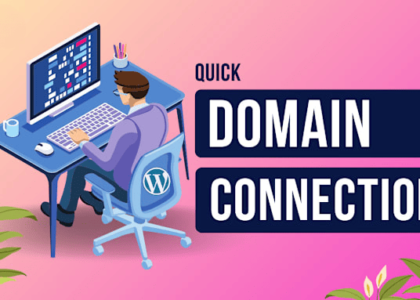Welcome to Fast Solutions Developer! As a business or website owner, you know that maintaining an online presence is critical to your success. However, the process of ongoing website management can seem daunting. This guide is designed to help you navigate the complexities of website maintenance, ensuring your site remains functional, secure, and engaging.
1. Regular Content Updates
Fresh Content
Keeping your website’s content fresh and relevant is essential. Regularly update blogs, news sections, and product descriptions to attract and retain visitors. This not only improves user engagement but also positively impacts SEO.
Review and Revise
Periodically review existing content for accuracy and relevance. Update outdated information and correct any errors. Ensure all links are functional and direct users to the appropriate destinations.
2. Performance Monitoring
Website Speed
Monitor your website’s load times and overall performance. Utilize tools like Google PageSpeed Insights or GTmetrix to identify areas for improvement. Slow websites can deter visitors and harm your search engine rankings.
Analytics
Use analytics tools such as Google Analytics to track user behavior. Analyze metrics like page views, bounce rates, and conversion rates. This data helps you understand your audience and refine your strategies.
3. Security Measures
Regular Backups
Regularly back up your website to prevent data loss. Schedule automatic backups and store them in a secure location. This ensures that you can quickly restore your site in case of a failure.
Update Software
Keep your website’s software, including the CMS, plugins, and themes, up to date. Outdated software can have vulnerabilities that hackers exploit. Regular updates ensure your site remains secure and functions properly.
Security Plugins
Install security plugins to add an extra layer of protection. Plugins like Wordfence or Sucuri can help detect and prevent malicious activities.
4. SEO Optimization
Keyword Research
Conduct ongoing keyword research to keep up with changing trends and search behaviors. Integrate relevant keywords naturally into your content to improve visibility.
On-Page SEO
Optimize on-page elements such as titles, meta descriptions, headers, and images. Ensure that each page follows best practices for SEO to enhance your search engine ranking.
Technical SEO
Regularly check for technical SEO issues, such as broken links, duplicate content, or crawl errors. Use tools like SEMrush or Ahrefs to conduct comprehensive site audits.
5. User Experience (UX) Enhancements
Mobile Responsiveness
Ensure your website is mobile-friendly. A significant portion of web traffic comes from mobile devices, and a responsive design enhances user experience and SEO.
Navigation
Simplify your site’s navigation to make it intuitive. Clear menus and a logical structure help users find information quickly and reduce bounce rates.
Accessibility
Implement accessibility features to make your website usable for everyone, including those with disabilities. Follow guidelines from the Web Content Accessibility Guidelines (WCAG) to ensure compliance.
6. Engagement and Interaction
Social Media Integration
Integrate your website with social media platforms. This allows visitors to share content easily and increases your reach.
Interactive Features
Add interactive elements such as comment sections, forums, or live chat support. These features enhance user engagement and provide immediate assistance to visitors.
Email Marketing
Maintain an email subscription list and regularly send out newsletters. This keeps your audience informed about updates, promotions, and new content.
7. Regular Audits and Improvements
Site Audits
Conduct regular site audits to identify and address issues. This includes checking for broken links, outdated content, and technical problems.
Feedback and Testing
Encourage user feedback to understand their experience. Conduct A/B testing to compare different versions of your site and make data-driven improvements.
Continuous Learning
Stay informed about the latest trends and best practices in website management. Attend webinars, read industry blogs, and participate in forums to continuously improve your skills.
Conclusion
Ongoing website management is an ongoing commitment, but it is crucial for maintaining a successful online presence. By following these steps, you can ensure your website remains dynamic, secure, and user-friendly. At Fast Solutions Developer, we are here to assist you with all your website management needs. Contact us for professional support and take your website to the next level.
For more insights and professional assistance, visit Fast Solutions Developer.
Happy managing!
This blog is designed to provide a comprehensive overview of ongoing website management. Adjust the links and specific details according to your actual services and offerings to make it more personalized and relevant to your audience.
Get start today! Sign up for a free trial and enjoy your first month for just $1 here. By embracing advanced Shopify scripting, you pave the way for a more agile and responsive online store, capable of adapting swiftly to market demands and customer expectations.
4o





